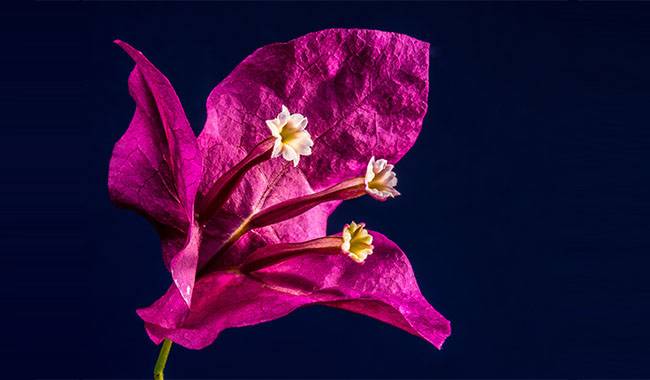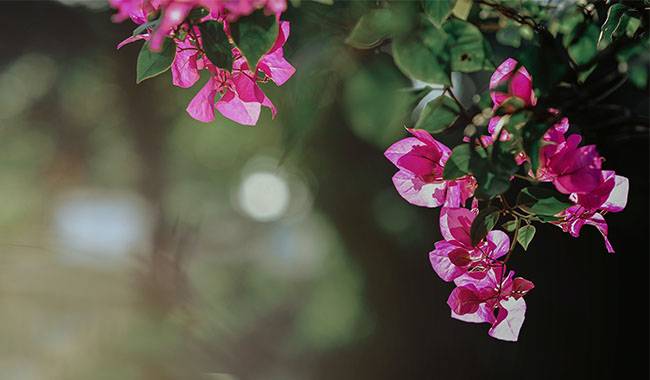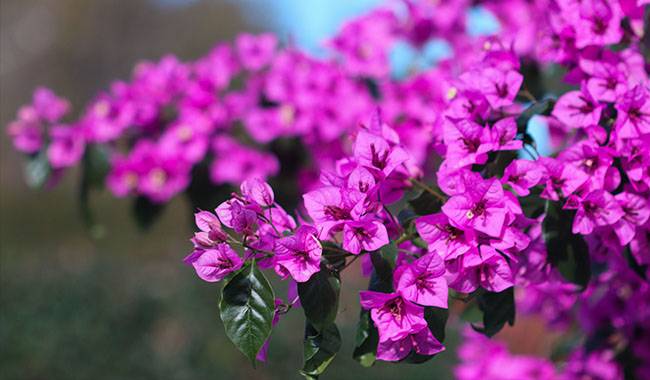
Many people dream of having a Bougainvillea with gorgeous blooms. it can be cultivated as a purely indoor plant or as a garden room plant. Either way, Bougainvillea are purchased for their unforgettable cloud-like flowers. Unfortunately, achieving the “perfect visual treat” effect is not always easy, especially in the average living room. In order to get this indoor Bougainvillea to bloom profusely and enjoy new shoots for a long time, you have to work hard to create truly optimal conditions for it. You will learn how to grow Bougainvillea plants in ThumbGarden’s article.
Bougainvillea will not flower without a cool environment
For this beautiful flowering vine, overwintering in cool conditions at around 50 °F (10 °C) or 41-60 °F (5-16 °C), as the case may be, is the basis for everything. Once the plant has finished flowering and stopped growing, it needs a proper rest period (sometimes starting in October, but also afterward if it is still flowering during the winter). Even in a warm room with pots close to the glass, the temperature can only drop to 60 °F (16°C), better than a steady heat. Bougainvillea needs a temperature regime to bloom and a change of care. However, if the overwintering site is cool, the chances of this happening are much greater.
No pruning or no flowering
This gorgeous vine blooms on young, vigorous, healthy, and strong side shoots. It will not bloom much if not pruned, but you must be smart about it. It is best to leave more than 3 years old shoots on the plant. To promote flowering, prune or trim shoots to one-third of their length after fading or early spring. Repeat pruning after each wave of flowering to induce vigorous new growth and germination. Of course, this stimulation does not replace sanitary cutting of damaged shoots and the formation of a strict form on the stand according to a selected contour or direction.

Solar light
During the active period of Bougainvillea growth, the main requirement is not the correct temperature but to give it as much light as possible. Bougainvillea can only fully reveal its beauty if it receives equal bright light all year round, and it needs two factors to bloom
- At least 5 hours of direct sunlight.
- At least 12 hours of light during the day.
Bougainvillea sometimes suffers even on an east-facing windowsill, and it is best to place it in the sunniest window in the house (partially or fully facing south if possible). If possible, it is best to add extra light from mid-autumn onwards to keep the sunlight hours as short as possible. In the brightest light, Bougainvillea blooms relentlessly, without seasonal changes, and even in winter, there are new waves of cheerfulness.
Not enough fresh air
This plant likes to always stay in a fixed place, but any displacement is very dangerous for it when it comes to germination and flowering. Even during sanitary procedures, it is worth making sure that the position of the canopy does not change. Otherwise, you may not be able to wait for flowering.
However, a movement that any Bougainvillea will enjoy. In summer, the plant likes to enjoy an air bath on a balcony, terrace, or at least by a permanently open window. Bougainvillea is very fond of fresh air and needs ventilation even in winter. In summer, plants exposed to the open air will flower and grow more vigorously than shrubs that languish in the indoor heat. However, this does not mean that Bougainvillea plants prefer ventilation (at any stage of development).
Inadequate watering
If the air is too dry, bougainvillea plants are often blamed for short or no flowering time. This plant will indeed fail to bloom properly if it is near an air conditioner or radiator that is not exposed to fresh air. However, regular sprays of warm water on the leaves or the installation of a tray of moist pebbles will suffice.
Bougainvillea cannot tolerate the complete drying out of the substrate. During active growth, even a slight lack of moisture can affect flowering. But you can also expect flowering if the plant is regularly exposed to sharp fluctuations in soil moisture. Water Bougainvillea so that only the top layer of soil dries out, but there is no risk of waterlogging or rot, and immediately drain the trays of water. Even in winter, the soil should not be allowed to dry out completely, but the water content of the soil should be reduced by a few times.
No fertilization
Do not fertilize Bougainvillea in spring and summer, but from the beginning of growth until October. Feeding must be heavy enough, not just regular, to ensure lush flowering. Bougainvillea prefers a multi-purpose compound fertilizer. You can switch to a special flowering plant fertilizer with higher potassium and phosphorus content as the flowering season approaches. Fertilize at least once every two weeks and apply a standard amount of fertilizer each time after pruning.

Incorrect soil and potting
This plant does not like its pot size to be too large. Pots should be chosen according to the size of the root system – no larger than 2 inches (5 cm) in diameter. If the space is too large, it will not bloom.
A light, loose substrate is essential for flowering and proper development. Even ready-made potting soil mixes and flowering plants should be given plenty of loosening agents. Light, expanding clay, vermiculite, perlite, charcoal, and coconut fiber will keep the soil permeable, even if it is not replanted every year. Bougainvillea also does not bloom in acidic soil.
The plant does not like to be disturbed. To not disrupt the flowering cycle, containers should only be changed when needed when the roots appear on top of the soil and in the drainage holes. The standard frequency for repotting is after 2-3 years. Not only should the plants be gently transplanted, but they should also be kept in a moist environment and under mild light during the acclimation period.
Pests of Bougainvillea
Bougainvillea plants most often fail to flower due to care and conditions, but insect infestations can also cause damage, depleting the plant and inevitably destroying its development. Therefore, any plant suspected of possible infestation should be immediately isolated from other plants, kept in moist air, and the buds, stalks, and backs of leaves carefully inspected.
Red spider mites, mealybugs, aphids, and scale mites are particularly dangerous to Bougainvillea. Stunted growth and a generally depressed appearance, nectar, sticky coating, discoloration, deformation, greenery, and bud loss, the first signs of infestation that can be easily recognized. All “enemies” on Bougainvillea must be dealt with in the same way. It is very dangerous to take slow action and experiment. It is best to remove diseased leaves immediately, wash the whole plant with soapy water and scrub the leaves thoroughly. It is worth trying to remove visible pests with an alcohol-soaked sponge or cotton swab. However, treatment with systemic insecticides is essential. Folk remedies and infusions for Bougainvillea are usually ineffective.







